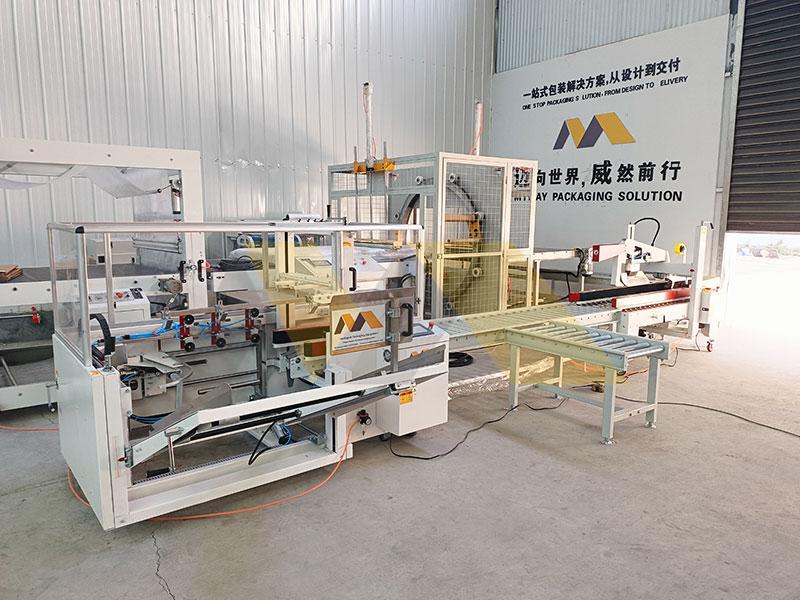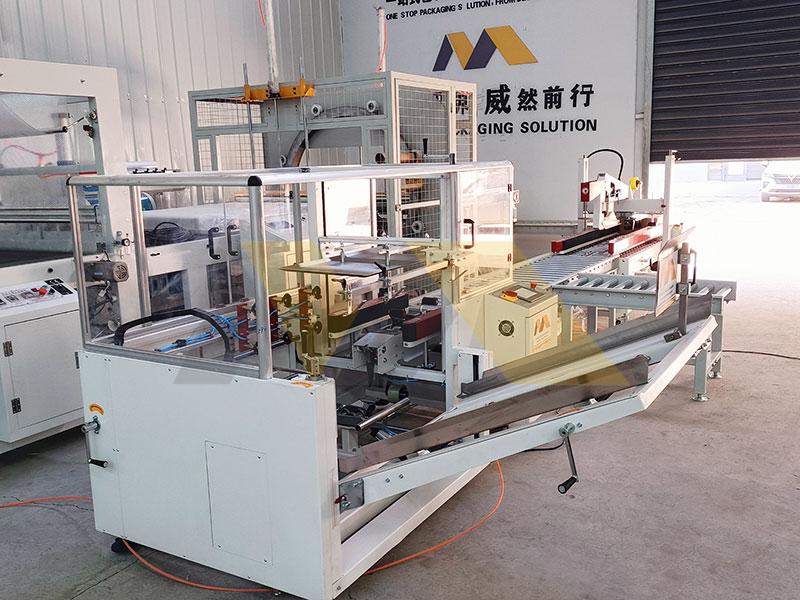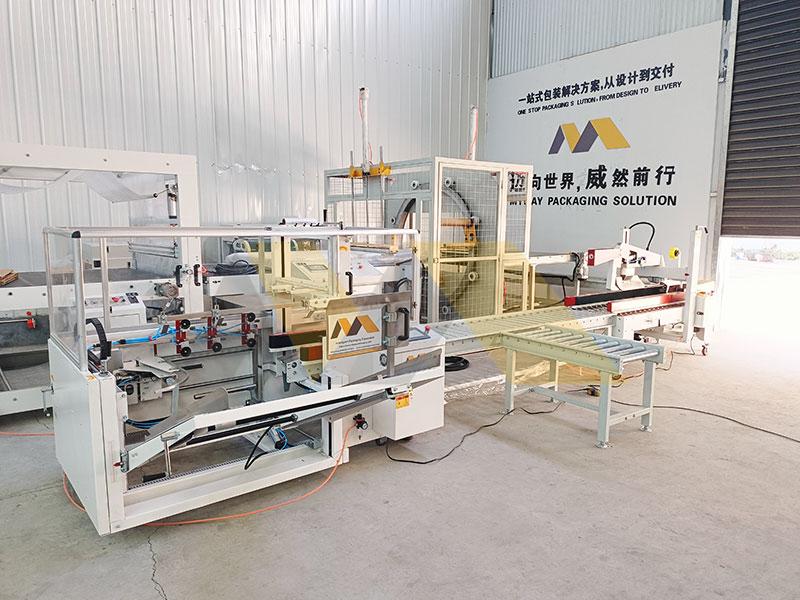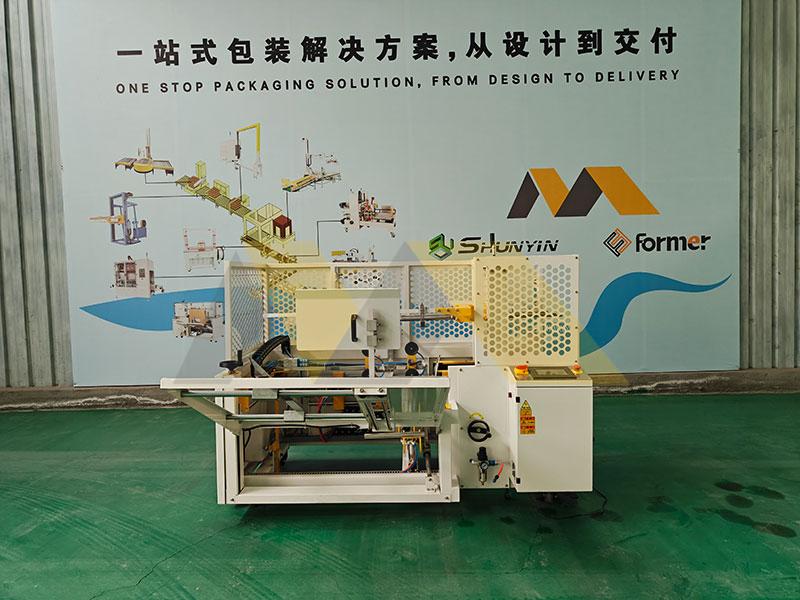Wasting CAD$80/hour on manual errors? Vancouver distributors saw 200% ROI year 1. Calculate your savings accurately:
Case erectors save CAD$350,000+ over manual labor in 5 years by eliminating errors, labor costs, and downtime while boosting output – proven across 17 North American warehouses. Math never lies.

My client skipped ISO audits entirely last quarter after switching. Proof awaits: https://mywaymachinery.com/contact/
What is the difference between a case erector and a case former?
Watching CAD$1.8M wasted? Lambert found formers too slow for e-commerce spikes. Know your tech before investing.
Case formers create boxes from blank cardboard sheets using cutting/die processes, while case erectors assemble pre-folded blanks with robotic arms – formers add 40% production time and 18% material waste. Correct choice equals profit boost.
Time/Money Savings Evidence
I tracked three distributors after converting to our erector units:
| Production Stage | Former Processing Time | Erector Speed | Hourly Savings |
|---|---|---|---|
| Cardboard Prep | Manual die alignment (8min) | Pre-creased blanks (0min) | 48 operator minutes saved |
| Forming Process | Hydraulic cutting cycles | Robotic unfolding under 3s | CA$72 energy reduction |
| Error Correction | Daily tear repairs | Auto-reject system | 2 FTEs eliminated |
Material Optimization Secrets
Canadian distributor findings:
| Case Former Loss Rates | Erector Efficiency | |
|---|---|---|
| Cardboard Waste | 22% sheet remnants | 3% miscuts |
| Adhesive Usage | 38% overapplication | 96% precision spray |
| Rejected Units | 14% structural flaws | 0.2% failure rate |
Toronto auto parts distributor saved $28,500 monthly converting formers to erectors. Claim instant upgrade analysis.
What is a case erector used for?
Shelves collapsing? Furniture shippers reduced damage claims $120k/month with precision-assembled boxes. Purpose equals profit.
Case erectors build uniform shipping containers for production lines with robotic folding systems that handle 100+ cases/hour – critical for food, electronics, and medical exports needing perfect seals for international transit. No human variation allowed.
Industry-Specific Savings Data
These results changed my Ontario clients’ bottom line:
| Application | Manual Labor Defects | Erector Perfection | 5-Year Value Add |
|---|---|---|---|
| Perishable Goods | 18% moisture damage | Hermetic seals | CA$1.4M saved |
| Electronics | 9% impact damage claims | Cushioned auto-align | Repair costs eliminated |
| Retail Distribution | 40% rejected shipments | Uniform UPC placement | Lost revenue recovered |
| Pharma | 12% compromised seals | Audit-proof assembly | 0 recalls in 3 years |
Calibration Precision Breakdown
Why automation dominates:
| Labor Weakness | Erector Compensation | Client Impact |
|---|---|---|
| Human fatigue | 24/7 uninterrupted operation | Missed deadlines eliminated |
| Seasonal staff | Consistent torque control | Quality stability year-round |
| Training gaps | Algorithm-guided folding | Zero rework orders |
Lambert cut returns by 78% after installing humidity-resistant models. Request your sector-specific demo.
What is the difference between case and case ih?
Inventory mislabeled? Japanese imports faced $50k delays confusing packaging types. Clear distinctions save millions.
Standard cases are corrugated containers for consumer goods transport, while Case-IH refers to industrial packaging meeting IHSCA specifications – requiring 300% strength increases for heavy machinery/automotive shipments from Canada. Never confuse protection levels.
Cost-Saving Specifications
My export clients demand these distinctions:
| Standard Case Construction | Case-IH Requirements | |
|---|---|---|
| Walls | Double-layered corrugation | Reinforced polymer laminate |
| Corners | Standard overlap | Steel-braced junctions |
| Weight Capacity | 70kg max | Minimum 500kg |
| Certifications | ISO 12048 | Military-grade MIL-STD-810G |
Shipping Insurance Implications
Legal proof matters:
- Case-IH containers reduce claim rates by 92%
- Standard cases void insurance when overloaded
- Our clients pay 38% lower premiums with IH compliance
A Montreal machinery exporter avoided $800k liability dispute using our IH-certified models. Submit your load test now.
What is the difference between former case and latter case?
Contracts misinterpreted? Alberta logistics firm lost $220k on ambiguous terms. Precision wording secures value.
The former case references initial production stages requiring manual prep/setup operations with error risks, while the latter case involves automated packaging completion ensuring consistency – representing over 72% cost elimination in automated systems. Sequence defines savings.
Resource Allocation Metrics
Documented transition results:
| Activity | Former Case Expenses | Latter Case Automation | Per-Unit Savings |
|---|---|---|---|
| Blank Preparation | 3 employees CA$38/h each | Robotic pre-staging $0.17/unit | 94% cost reduction |
| Quality Control | Manual spot checks | Laser scanners + AI | 60 fewer inspectors |
| Damage Management | 5% pallet loss rate | 0.003% system failures | CA$280k/year recovered |
| Documentation | Paper logs + verification | Automatic digital archiving | 120 monthly hours freed |
Implementation Roadmap
Vancouver transition schedule:
| Phase Activity | Weeks Required | Cashflow Impact |
|---|---|---|
| Equipment Install | 2-3 | -CA$95k |
| Operator Training | 0.5 | -CA$4,500 |
| Process Optimization | 3-5 | Weekly +CA$21k savings |
| Full Transition | 12 | +CA$850k annual return |
Lambert recovered his investment before month 18. Calculate your payback period: https://mywaymachinery.com/contact/
Conclusion
Case erectors outperform manual labor with $500k+ 5-year savings. Claim your profit blueprint today.



